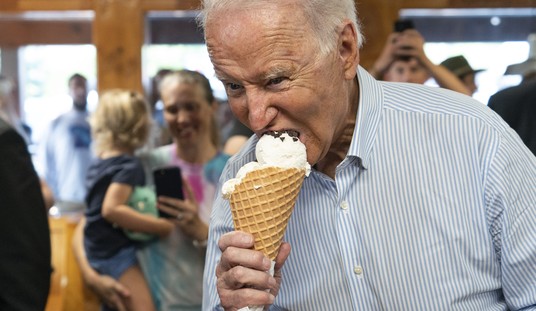
With two primaries down in the 2018 midterms- Texas and Illinois- what have we learned thus far? Although it may be difficult to determine any discernible trend, from what we have seen, we can surmise certain things. It is a truism in politics that the party in power in the White House loses seats in midterm elections and this year should be no different. The only exception in recent history was 2004. And with Trump in the White House, anything is possible. But, the first thing to take note of is…
TEXAS IS NOT GOING BLUE
In the Senate primaries, Republican candidates, which numbered four, took in over 1.5 million votes while the three Democrats garnered a little over 1.0 million votes. Put another way, Republicans outperformed the Democrats 59.8% to 40.2%. This will pit incumbent Ted Cruz against Democrat Beto O’Rourke. More importantly, Cruz and his fellow Republicans on the ballot performed well in the three most populous counties in Texas- Harris, Dallas and Tarrant. In fact, Republicans received the majority of votes in Tarrant. The beauty of Texas is that all Cruz has to do in the metropolitan counties is perform admirably or stay relatively close.
As others have pointed out, if one looks at the map of Texas where Democrat Beto O’Rourke prevailed, it looks like the one where Abortion Barbie, Wendy Davis, went down to dismal defeat for Governor in 2014. As for the House races, fields are not set in several districts as there will be six GOP runoffs and the Democrats ten. Generally low turnout affairs, it would appear that after these runoffs are completed, only one district remains vulnerable for the GOP- William Hurd in the 23rd. If the 23rd flips to the Democrats, it would not be a major surprise. But, losing one seat out of Texas is not a blue wave.
Women taking center stage
Just in Texas alone, there were 210 candidates on both sides spread across 36 Congressional districts. Of the 103 Democratic candidates (including incumbents), 34 were women, or 33% compared to 14 of 107 (13%) on the GOP side. Overall, of the 80 candidates in Illinois, 15 of 80 candidates from both parties (15%) were female- all on the Democratic side. In California, 50 women are on the primary ballot spread across 53 districts.
Simple probability theory predicts that given the large number of women on the ballots, they would prevail in the primaries. In Texas, 12 Democratic women advanced to the general election and/or a runoff. However, except for the aforementioned 23rd District, the chances of female general election victories in Texas are very slim. Likewise, unless something very dramatic happens on Election night, the females challenging male Republican incumbents in Illinois face an uphill battle.
It does become obvious that the Democrats intend to play the gender card come November. That strategy did not work out too well for Wendy Davis in Texas in 2014 and it is likely that the MeToo train may have spent its energy by November.
Democrats Going Left
As our own Caleb Howe reported, Blue Dog Democrat (is there such a thing anymore?) Dan Lipinksi won a close race in Illinois’ Third District against Marie Newman. Newman received a large donation from NARAL while Planned Parenthood dumped over $150,000 mostly opposing Lipinski. In short, over $1.5 million was spent by a plethora of outside groups hoping to take down Lipinski. For all the money spent, Lipinski managed to win by less than 3,000 votes of over 92,000 cast. At least as concerns the issue of abortion, there seems to be little room for moderation or compromise within the Democratic Party. There are likely other issues- immigration, gun control, spending, etc. But it appears that if one does not submit to the liberal orthodoxy, they will find themselves the subject of concerted attacks. For a party that decries Citizens United, they sure have learned the game.
Coupled with the rather more liberal candidates in California, New York, New Jersey and elsewhere, it would appear that Democratic Party’s lurch leftward is proceeding unimpeded. Conversely, you have the Democratic victory of Connor Lamb in Pennsylvania’s 18th District where a liberal dressed himself in sort-of-conservative clothing. But at heart, he is a liberal through and through.
Also consider the fact that the man who caused the greatest stir in 2016 (other than Trump) was a socialist- Bernie Sanders. As others have noted, the party has cast aside pragmatism for ideological purity. In 2016, the alleged pramatist/moderate Hillary Clinton had to shed any semblance of that term to duel Sanders. Winning back the Senate may be a bridge too far for the Democrats, but the House is reasonable possibility. In liberal states like California, the liberals are trying to out-liberal themselves in the upcoming primary.
Dems smell blood
In Illinois this year, there were 47 Democrats on the ballot spread across 18 House districts. Chomping at the bits of taking on an incumbent Republican were 30 of those 47 Democrats. In Texas, there were 107 Democrats on the ballot with 64 of them attempting to take on a GOP incumbent. The same trends are seen in California, New York and elsewhere: a plethora of Democrats throwing their hats into the primary ring. In Texas, some of the interest is in the several open seats, but realistically, most of these are districts that heavily favor the Republican Party.
However, one cannot dismiss the fact that perhaps a record number of Democrats are smelling blood in the water and are willing to at least mount a primary challenge to take on a Republican in November. Further, given the number of GOP retirements from the House- many of them from key Congressional committees- opportunities have opened up that did not exist there before for the Democratic Party.
What do special elections mean?
The Democrats seem to have taken stock in special elections since the election of Trump. The first was the KS-04 when Mike Pompeo resigned to take on a role in the Trump administration as head of the CIA. By Kansas standards, the race was relatively close. But in an open race, the final tallies are generally closer than what an incumbent would expect. Still, Ron Estes- the GOP candidate- won by 6.2% and more than 7,000 votes.
Next up was the Georgia 6th District where Karen Handel faced off against Democrat Jon Osoff. Handel won this race by 3.6% and over 9,000 votes. What got the juices of the Democrats going was the fact that Osoff outperformed Hillary Clinton in this district that Trump won. What is most interesting is that it cost Osoff $237 per vote to lose an election compared against Handel’s $47 per vote to win the election. Considering that most of that money for Osoff originated outside the district, it makes his loss even more glaring.
Instead of touting this race, they should have been touting the closer race in all respects in the SC-05 district. Even still, although the race was relatively close and spending/contributions were also close, the GOP again prevailed. Forget about Montana where even a punch in the nose of a reporter could not derail another GOP victory.
The Democrats got their first taste of victory in the Alabama special election to succeed Jeff Sessions. However, I think it is safe to say that the Republican candidate, Roy Moore, ran his race while carrying considerable baggage from his past. In effect, we can assume that Doug Jones is a caretaker until 2021 when Alabama should revert back to GOP control. Still, given the money poured into the race, Jones won by less than 22,000 votes which happens to be the amount of write-in votes cast in the election. Simply, with a “better” candidate, this would not be a Democratic victory.
Finally, there was the special election in Pennsylvania’s 18th District where Democrat Connor Lamb won in a district Trump won by a large margin. Again, we can look at the spending where it took Lamb $26.64 per vote against his Republican opponent’s $5.41 per vote. Furthermore- leaving aside the 2016 Presidential results in this district- it is the last election in Pennsylvania held under the old district map. The new map favors the GOP more than it did previously.
In short, special elections do not necessarily predict what will happen in November.
The obvious elephant in the room
Obviously, the Democrats hope to use Donald Trump against the GOP in November. In Texas, there was no doubt that their attempts were to pin the Republican incumbent to Trump. In the 23rd District’s Democratic primary, one candidate- Jay Hulings- used the slogan: “Stop Trump. Vote Jay Hulings.” Unfortunately, Hulings finished in 4th place (out of 5) with only 15% of the vote. In the other targeted Republican-held districts- John Culberson in the 7th and Pete Sessions in the 32nd- GOP turnout exceeded that of Democrats in both districts despite these efforts.
Anti-Trump sentiment in Illinois was also a factor in formulating a Democratic strategy. Incumbent GOP Governor Bruce Rauner won a relatively close primary over Jeanne Ives. Ives was a pro-Trump candidate. However, Rauner’s problems in Illinois run deeper than any association with Trump. Instead, the Democrats hoped to use anti-Trump sentiment to fuel voter turnout. Compared to 2014, they largely succeeded. However, like Texas, GOP incumbents ran either unopposed or won their primaries and in the end may be in fairly safe districts come November.
In the Alabama race, Trump’s originally prefered candidate- Luther Strange- lost his primary bid against Roy Moore. Trump then supported Moore. But as was stated earlier, it is hard to determine whether Trump had any effect given Moore’s late campaign problems. In the PA-18 special election, Trump did campaign for the GOP candidate who lost a relatively close race. That campaign appearance was more a Trump rally than a support-this-candidate rally.
In the generic poll, Democrats held a 12.9% advantage on January 1st according to Realclearpolitics. Today that advantage stands at 5.8%. Meanwhile over the same time period, Trump’s approval has gone from 40% to 42.2% showing an upside down approval/disapproval change of -15.6% to -10.4%. The GOP has shown a 55% improvement in the generic poll while Trump has shown only a 5% improvement in approval overall while reducing the gap between approval and disapproval by 33%. The moral of the story: Trump should worry about Trump and leave the Congressional races alone.













Join the conversation as a VIP Member